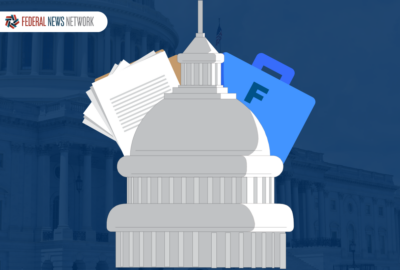Insight by Adobe
‘Seamless’ customer experience starts with understanding the user’s journey
Adobe’s Nancy Newell says agencies need to catch up with the private sector to deliver a level of customer service that the public expects.
The federal government is setting a new standard for service delivery by designating nearly 40 agencies and program offices as High-Impact Service Providers, based on the scale and impact of the services they offer to the public.
Nancy Newell, the head of strategic alliances and marketing experiences for public sector at Adobe, said the agencies designated as HISPs demonstrate the breadth of services available across the federal government.
“They all are unique. They all deliver different services to different constituents or citizens, and every one of them is going to have to probably have a unique subset of how they solve their issues. And it’s not going to be the thing where we can just say, ‘Let’s sit down and figure out one solution that’s going to work for everyone,” Newell said. “Every one of them is looking for different things that they’re going to need to really solve this … There’s a lot of them that are going to have to catch up, that aren’t where they need to be, just to be status quo. And then there are those that are ahead of the curve, and they’re looking at this as a new innovative way to really bring what’s possible from government.”
Agencies have a clear sense of what it will take to improve customer service delivery. The Office of Management and Budget, in its recent guidance on delivering a “digital-first public experience,” states that most individuals access government services online, and that a growing segment of that traffic comes from mobile devices.
Seamless, personalized customer experiences
OMB’s digital-first guidance instructs agencies to design products and services with experience-driven government in mind, putting the user at the center of government.
“When you look at the experience that you’re trying to deliver, it’s got to be seamless … It’s that end-to-end journey you’re taking them on,” Newell said. “It’s got to be personalized. It’s got to be based on the data that’s existing — that behavioral data, so that you really know, what does that citizen want? Where do they want to interact with government? How do they want it? What is it going to say? It’s that approach that you’re receiving already in the commercial world, and if government can shift to that … there’s connectivity, there’s coordination, there’s pre-population of forms and things like that, where they actually understand who their constituents are and what they want. That’s really going to help them build that brand.”
Newell said the guidance makes it clear that agencies should make their services “digital first, not digital only,” and that customers will always have the option to obtain services through other channels — such as over the phone or in person — if they prefer.
“It’s helping us take those public experiences that are out there, and really provide the strategy around those channels. What are channels? What are the things that government needs? It’s going to make them take that commercial lens and look at things like apps and websites and that in-person experience — that office time, those kiosks that are in airports or in our government offices, the email that’s generated, social channels … this whole concept of not digital only, but digital first, we really want to look at the entire experience. That’s just critical to what we’re trying to do.”
While each agency faces its own journey to improve customer service, Newell said all agencies need to understand that a better customer experience begins with improving the employee experience, and giving frontline staff the tools they need to meet customer needs.
“If they’ve got the right dashboards, they’ve got the right analytics platform, they’ve got a campaign … It’s got to be an environment where they very quickly have a profile of that customer,” Newell said. “They know what they’re wanting. They’re able to take them on the digital journey that they want, based on that data. All of that’s got to be in an environment where that employee shows up to work every day and says ‘OK, I know where I am. I know what needs to happen’. If that is not there from a technology perspective, you’re really not setting yourself up to be able to scale like you’re going to need to.”
Data-driven insights into CX delivery
Newell said agencies need to ensure they’re gathering customer feedback, and leveraging their data to make evidence-based decisions to improve service delivery.
“A lot of agencies use surveys to really understand, how did you interact? How was our stack? All those kinds of things — it’s very, very important,” Newell said. “When you have an analytics platform, or you have the data platforms in place, you now can get all this through behavioral data. And taking that data and understanding, in that user experience, where you’re going to catch their attention — how many texts, how many emails, how many interactions do you have to have with them before they’re going to respond? Are they going to go through the whole journey in technology — are they going to want it fast, a couple clicks, and they’re done? A lot of those analytics that are based on things that we touch every day, are going to help build up those journeys. What I find with government agencies, is they don’t always have the users connected in a way where they can pull that data.”
As the federal government takes steps to deliver a better customer experience to the public, Newell said it’s important for agencies to take inventory of the data and tools they have available to achieve their CX goals — and what they need to take their service delivery to the next level.
“What do they currently have? What’s at their fingertips? What’s working? What’s not working? That’s going to have to happen before you ever bring in web modernization,” she said. “Once you’ve laid out what that journey or experience needs to look like, then taking those words like web modernization, saying, ‘OK, we really need a good content management system, we need to be able to really have true real time web analytics, so that we’re able to create that environment, an agile environment that allows it to move forward, we need to be able to take that journey that they’re on, and make sure we didn’t lose them halfway through the journey.”
To learn more from Adobe, click here.
Discover more about how to elevate your customer experience in the “Excellent, equitable and secure customer experience: A closer look at high-impact service providers” series.
Copyright © 2025 Federal News Network. All rights reserved. This website is not intended for users located within the European Economic Area.
Jory Heckman is a reporter at Federal News Network covering U.S. Postal Service, IRS, big data and technology issues.
Follow @jheckmanWFED






